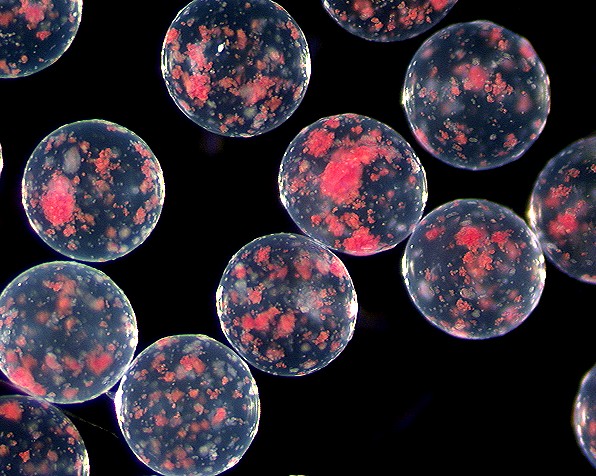Boston University/Microencapsulation
From 2007.igem.org
Ferrozine dye:
Previous ferrozine dye screening methods involved the monitoring of individual S. oneidensis cells in a 384 well plate. Each well contained clear-colored ferrozine dye. The ferrozine dye turns pink when it is reduced by the bacteria. In this way, high-performing bacteria could be selected by monitoring the relative color change in the wells. Because each mutant strain must be screened individually, this process is time-consuming and inefficient.
Microencapsulation of individual bacterium using alginate beads:
The newly proposed screening method involves the microencapsulation of the S. oneidensis cells with alginate beads, a seaweed extract. Using alginate beads, a single bacterium can be encapsulated in a microenvironment containing CTC, a redox-sensitive fluorescent dye. To greatly enhance the screening time of this process, fluorescence-activated cell-sorting (FACS) is then used to sort the alginate beads based on ferrozine fluorescence.
